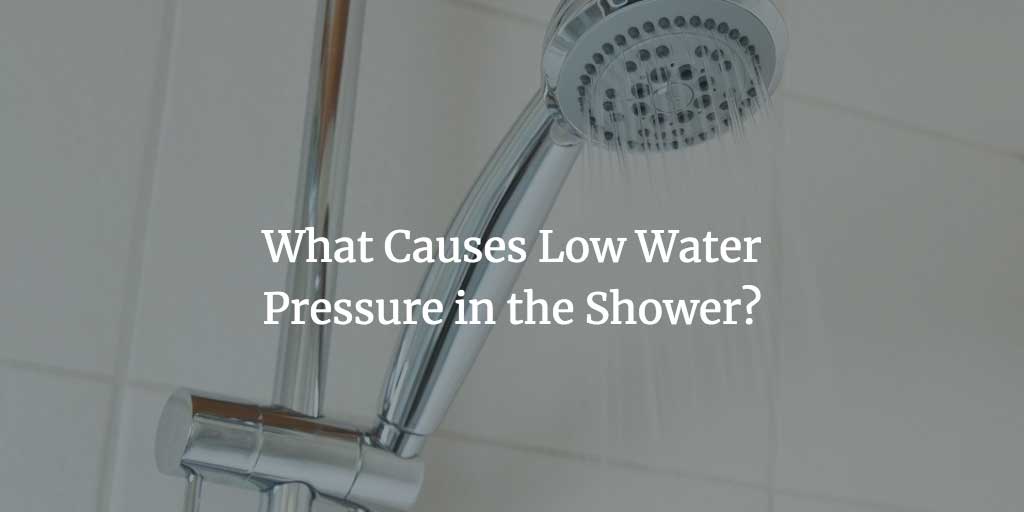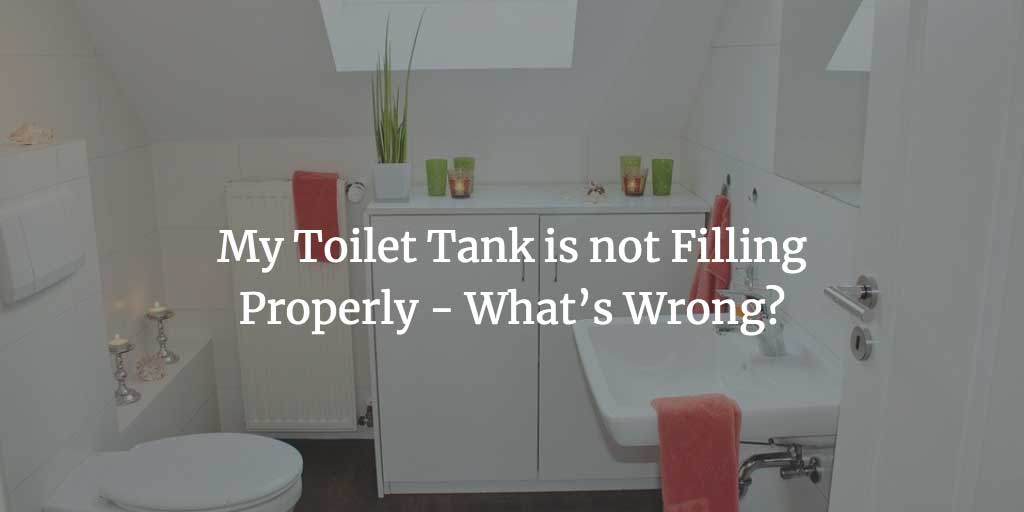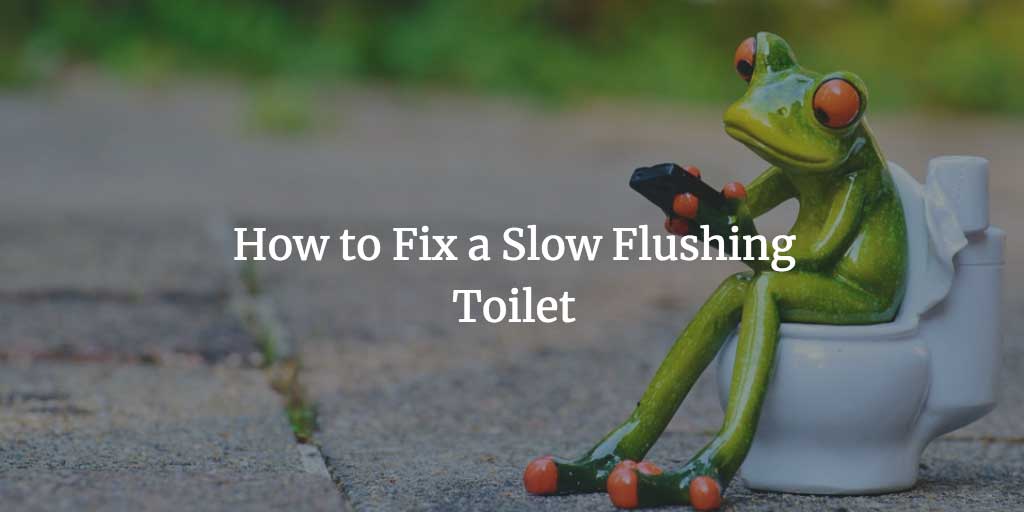Every person has a right to a refreshing morning shower. But, low water pressure in the shower may be depriving you of that satisfaction, (and make any high pressured showerhead useless).
Low water pressure can be more than a mere inconvenience. It may be a sign of bigger problems. Let’s see what causes low water pressure in the shower and what you can do about it.
Contents
Why Do I Have Low Water Pressure in my Shower?
Here is a list of the most common causes of low water pressure in showers. While a lot of these factors may be out of your control, there is always something you can try.
Initial Installation
If the chronic low water pressure in the house has been an issue ever since you moved into the house, the initial fixture installation probably didn’t go so well. It’s common for small pieces of plastic, wood chips, wood dust, and copper shavings to find their way into the water lines during installation.
But, problems occur when the plumber who is in charge of setting up the pipes forgets to flush out the water supply lines before they start installing fixtures. If that happens, the water flow will push the debris into the showerhead. This can clog the small holes in the showerhead in just a few seconds.
Debris From the City Water System
If everything used to work fine before and the low water pressure in your shower developed gradually, the plumber is not at fault. You may have debris or sediment from the city water system in your water supply. This problem is very common and this type of debris can clog the restriction.
If your home is fed by old city water mains, you should definitely look into this issue. This type of debris can also appear during city water system repairs. Bigger clogs can block your main water line and smaller debris can end up in the showerhead and block it.
Toilet Elevation
When it’s in a confined space, water transfers pressure horizontally. So, even if the pipe is horizontal, the pressure within it is the same as it would be in a vertical pipe. This means that the height of the water storage tank could be the problem.
Water storage tanks use gravity to deliver water. If a tank is positioned lower than your house, it could be the main culprit here. But, if the water pressure is low only in your shower, you can remove elevation from the list of suspects.
Old Low-Flow Showerhead
You may have a water-conserving or low-flow showerhead. Such showerheads are standard in areas like California. These days they make them quite good, but if you have an older model, it may be the reason behind your dissatisfying showers.
Worn Out Volume Control
The average single control shower has a volume valve that affects water pressure. Over time, after much use, it may start disrupting the water flow. Repairs usually don’t work, so it’s best to replace it. And, that’s not something you should try doing yourself.
Blocked Showerhead
Hard water contains mineral deposits that can accumulate in showerheads. Over time, those deposits can decrease the flow and volume of water. And if you have a dual shower head, mind clean both.
Wider Plumbing Issues
Pipes may corrode over time. This corrosion can lead to blockages which then lead to low water pressure in the shower. The plumbing in your house could also be leaking. If you suspect that your plumbing system is damaged, you should have someone inspect it as soon as possible.
Home Valves
Sometimes, valves get shut off by accident—partially or completely. There are two main valves that can cause low water pressure issues—the home valve and the curb valve.
The home valve can be found near one of the outside walls( in the utility area) or inside the house (usually the basement). The curb valve is in the meter box located in front of your house. These valves can cause low water pressure when they are turned from the “on” position, even if it’s just slightly.
Peak Periods
Most of us operate during the same time each day, even though we may not realize it. So, if most people in your neighborhood use their shower at the same time, low water pressure may occur. To see whether this is the problem (and to solve it) change your showering schedule a bit.
How to Increase the Water Pressure in Your Shower
Naturally, some of these problems can only be fixed by a professional. But, you’d want to rule out the other problems—the ones you can fix the issue yourself.
Clean the Showerhead
As mentioned, mineral deposits could be blocking your showerhead. Luckily, you can remove these mineral deposits. Detach the showerhead and soak it in a bowl of vinegar. Let it sit for at least eight hours.
Then, take it out, wash it off, and remove the remaining deposits with a toothpick or toothbrush. This may improve the flow of water. But, you could have a hard time removing mineral deposits from your showcase. If that’s the case, the most cost-effective solution is to buy a new one.
Replace Your Low-Flow Showerhead
Low-flow or water-conserving showerheads are easy to replace. But, local laws may prohibit you from doing so. Due to ongoing drought problems, California has the toughest showerhead requirements.
In the Golden State, the showerhead flow is restricted to 1.8 gallons per minute. Other areas prone to drought may have similar regulations. If you want to replace your low-flow showerhead, check your local plumbing code first. The good news is, replacing your old showerhead model with a new one that has the same GPM may solve the issue.
Open the Home Valve to Increase the Water Flow
You can turn it on and off by yourself. As mentioned, it’s typically located in the basement or on an exterior wall. If you can’t find it, check your property inspection report. Even if you didn’t have water supply issues at the time of the property inspection, your home valve should be mentioned somewhere in the report.
When you find it, turn it counter-clockwise—carefully. It could be rusty or just worn out, so do it slowly. In case the valve has a knife blade-like handle, turn it as far counter-clockwise as you can.
Open the Curb Valve
While your main home valve is your property, that may not be the case with your curb valve. It probably belongs to your water utility company. You may not even have the right to open your curb valve. If you suspect the customer valve is the culprit, you need to give your water utility company a call first. If it’s their ‘jurisdiction,’ they can send a team to inspect the valve.
Since no one else is allowed to mess with it, you may be wondering how could it be the problem. Sometimes the curb valve needs to be shut-off during major construction work on a house. And, sometimes, construction workers or plumbers don’t turn it back on properly.
If you’re allowed to open or shut the curb valve, check whether it’s turned all the way on. You can find it at the curbside where your water main enters your property. It’s inside the water meter. If it’s not fully turned on, turn the handle counter-clockwise.
Open up In-Line Shut-Off Valves
If opening the house valve or curb valve didn’t work, you should check the other water supply valves in your home. Some houses have in-line shut-off valves. Typically, each individual branch line has a shut-off valve.
People use them when they are doing some work in a local area, like the sink, toilet, or shower. They are convenient as you don’t need to shut off the water in the entire property when you’re trying to fix something.
Your shower shut-off valve should be near the supply pipes. If your shower supply lines are in the basement, the shut-off valve should be on the pipe (or pipes) leading up to the shower. To check whether the problem is in the shut-off valve, turn it clockwise for full pressure.
If All Fails Call a Plumber to Fix the Low Water Pressure in the Shower
Troubleshooting could help you solve the low water pressure issue in your shower, but some causes may be out of your control. However, even if you don’t succeed, you may be able to provide some useful info to your plumber. While you can’t repair damaged pipes or solve city water supply issues, your efforts may save the plumber a lot of time and help you save a few more pennies.



